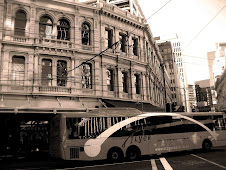Oxfam, Broadway. Oxfam have been running a sale with 'over 1500 lines to clear'. Now for the typical size of their store, 1500 lines is a lot. For a 'for-profit' retailer this is just the pain you take for having mis-read demand - either in terms of volumes, or preferences. It is a truism of retail that you need to move slow-moving stock (SLOBS - slow obsolescent lines) to free up cashflow to replace it with stuff that shoppers DO want.
However, this raises some interesting questions about how a Not For Profit (NFP) entity operates in the retail space. Let me say that I have no idea how Oxfam have structured their retail operation, and that I applaud the way in which they been able to distribute product from suppliers who would normally not have had access to the retail channel.
Ok, so caveats aside, here are some of the questions:
1. Is the retail entity expected to do more than simply break-even ? Who pays the cost of capital ?
2. Who carries the pain for markdowns ? presumably suppliers have been paid a fixed price ?
3. Does the scale of these markdowns suggest a broader problem with this type of business model ? In other words are shoppers only prepared to do so much 'ethical' purchasing ?
4. How aggressive should they be with the markdowns before it impacts on the perceived quality of their offering ? Do they then negotiate tougher trading terms with their suppliers (as most retailers would) ?
5. As a donor to Oxfam, would you be comfortable with the idea that your dollars might (I say this advisedly) be cross-subsidising their retail activity ? I would guess most donors would not. So, if not, what is the situation ?
6. As a donor to Oxfam, would you buy some of the 'distressed' merchandise ? Or would that make you feel slightly guilty ?
7. As a shopper, you can probably find similar 'ethnic' merchandise in other stores ? Does this influence your perception of price and value ?
I would be most interested to hear some perspectives, including from Oxfam.





+(1).jpg)
+(1).jpg)
.jpg)
+(1).jpg)



.jpg)
.jpg)

.jpg)
No comments:
Post a Comment